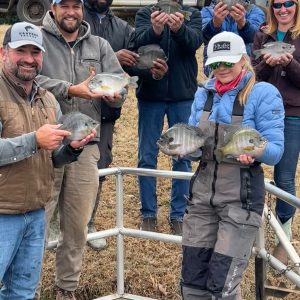There are so many unpredictable details that can make harvesting a springtime longbeard either easier or more difficult. We have to deal with weather, time of the season, hunting pressure and natural turkey biology just to name a few. While there are numerous important points that can mean the difference between an unused tag and a 25-pounder hanging on a limb by its spurs, the following three subjects are among the most vital.
The Importance of Reconnaissance
Scouting is possibly the most important element of hunting anything, but especially turkeys. Learning roost locations, strutting zones, grit sources, bugging habitat and the lay of the land can mean everything. Now and again you may call a gobbler through a fence, around a blow-down, over a creek, or across a road, but don’t count on it happening often. Ideally you want to position yourself within an area they have utilized before where it’s easy for them to access. Scouting will teach you your best options.
Learning where the bird is going to be at certain times of the day is a key. Keep a journal if necessary. Read maps and satellite images and you’ll see patterns. Hunting/management aps like onX can help with keeping information. If you get them to answer your calls, write down the time, place, and the specific call he answered to. If you “take their temperature” while scouting, it can make it easy when it’s time to hunt.
React to Natural Turkey Biology, and Hang in There
 Knowing what to do if a tom “hangs up,” stops gobbling to your calls, or is traveling with live hens (as examples) are all important if you wish to have consistent success. Natural turkey biology can sometimes make turkey hunting seem difficult. You can read about what to do, or watch DVDs on how to handle different situations, but experience is the best teacher. Three attributes that will help you score day in and day out regardless are persistence, patience, and hunter’s savvy.
Knowing what to do if a tom “hangs up,” stops gobbling to your calls, or is traveling with live hens (as examples) are all important if you wish to have consistent success. Natural turkey biology can sometimes make turkey hunting seem difficult. You can read about what to do, or watch DVDs on how to handle different situations, but experience is the best teacher. Three attributes that will help you score day in and day out regardless are persistence, patience, and hunter’s savvy.
Not every set-up is going to result in gobblers running into meet your arrow or load of shot. Persistence is important – trying again and again is how we learn. If you don’t give up, it will happen. Whether you back out, circle around and try again on the same bird, or go running and gunning to try and find one that feels like being social, persistence and patience are more important than being a good caller.
Get the Gear & Get Good with It
Having the correct equipment, knowing how to use it properly and how you will perform with it, is equally as important as our other points. Some of the most essential paraphernalia will be your camouflage, calls and decoys – but let’s not forget your gun or bow.
No matter if you hunt with a gun or bow, you must be proficient with it. You must be able to hit a target the size of your fist at whatever distance you determine to be your maximum confident range…and remember that target will probably be moving. If you hunt with a shotgun, you must know your boundaries and how different loads pattern. Either way, when you “drop the string” or pull the trigger, you must know your limitations and only take ethical chances that you determine will be a “killing shot.”






